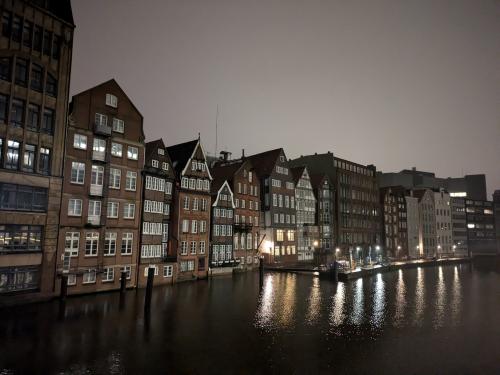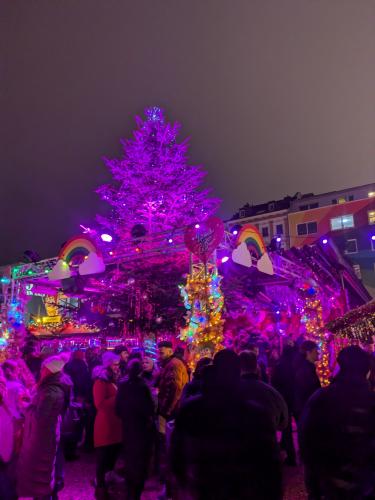Travel: 48 hours in Hamburg

Hamburg is like a German Seattle. It’s the third largest port city in Europe, with cloudy and rainy winters and an industrial vibe with links to a famous music scene. The city has had its share of tragedy- first, the major fire of 1842 which destroyed most of the city, and then, the allied bombing campaign during World War 2.
Little remains of the city from before 1842, but you can still find some traces of it in the old town, particularly around Nikolaifleet Klienes Dock where you can see some of the old workshop houses where a family would live, work, make and sell their merchandise.
The standout neighborhood was the Speicherstadt (City of Warehouses). Construction began in 1883 as a free zone to transfer goods without taxes. The zone is a perfect example of Neogothic and Modernist architecture and is a UNESCO world heritage site in 2015. Today it is a major tourist attraction, home to museums and production of oriental rugs.
Just outside the Speicherstadt stands the Elbphilharmonie, the city’s concert hall which opened in 2017. Designed by the Swiss architecture firm Herzog & de Meuron, the building stands out as an architectural gem of the city which may explain the 7-year construction timeline delay and the 645-million-euro budget overrun. The building offers a wrap-around viewing deck of the city for free.
Hamburg has a diverse food scene. There are plenty of German favorites like schnitzel and currywurst, but the city is known for their fish sandwiches, including the Bismarck, (pickled herring) or Matjes (brined herring) and payday-worthy shrimp sandwiches. In town there was a Vietnamese restaurant famous for its pho (Vietnamese soup) which was perfect for a cold rainy day. There are plenty of Turkish Kebab vendors for a fast casual meal and Turkish cafes which serve large breakfasts as well.
There are plenty of good value hotels in Saint Pauli which is a famous redlight district where the Beatles started out. Club Indra has a small plaque outside commemorating the band, now open on weekends. The neighborhood was lively at night and is often compared to the redlight district of Amsterdam. Due to its proximity to the port, the neighborhood has always catered to sailors in a hurry to spend their earnings.
Every Sunday, Fishmarkt (Fish Market in St Pauli) welcomes 70,000 locals and visitors with live music and enthusiastic fish market criers. The market started in 1703 and gives some people an excuse to stay up all night Saturday.
Transportation throughout the city is as good as it gets. The S-Bahn and U-Bahn can take you anywhere in the city, including the airport, for under 3 euros. Much of the area’s downtown is walkable with some streets closed to traffic.
A trip in December would include plenty of Christmas markets to visit. Some standouts are the City Hall traditional market and St. Pauli’s adult Christmas market. The City Hall was loaded with decorated stalls selling handmade crafts and local food specialties along with the usual hot mulled wine. This market was perfect for families with Santa’s sleigh passing overhead about every hour. The Santa Paulis market located in St. Pauli had more of an adult theme with more wine vendors and open grills for bratwurst and other German specialties. This market had more space for music and dancing with some adult-themed Christmas vendors and even a strip show. This market is open till 11pm and 1am on the weekends.
Overall, a trip would meet a traveler’s high expectations. With a direct flight from Rome under 70 euros, it is very much worth the cost.
jp-mlp


© COPYRIGHT ITALIAN INSIDER
UNAUTHORISED REPRODUCTION FORBIDDEN


